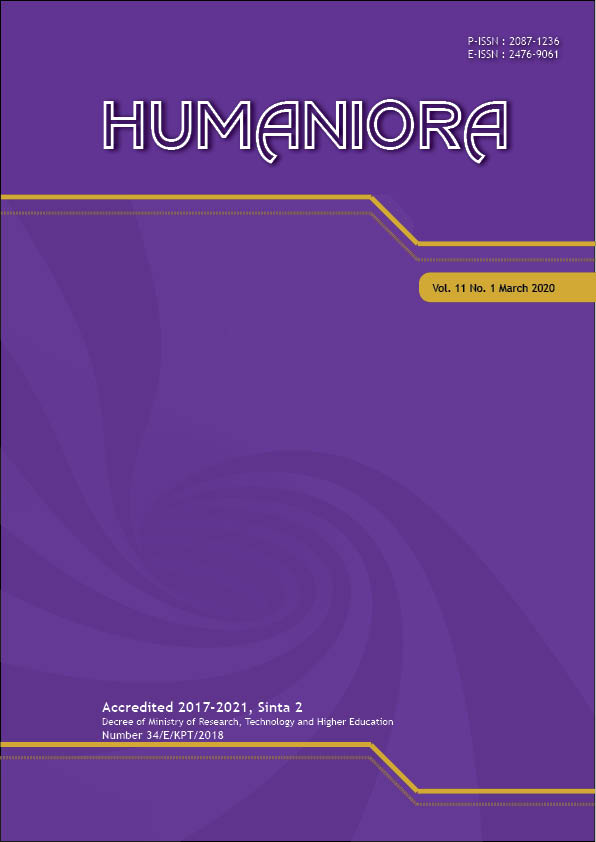New Democracy in Digital Era through Social Media and News Online
DOI:
https://doi.org/10.21512/humaniora.v11i1.6182Keywords:
new democracy, digital era, social media, news onlineAbstract
The research aimed to explain the pattern of social communication on the issue of rejection of the PLTU Batang development policy. It used data on Twitter accounts involved in the rejection of the PLTU Batang development policy. In analyzing existing data, qualitative methods and social analysis networks were used. To see social networks in the rejection of the PLTU Batang development policy, the research used the NodeXL application to find out the patterns of social communication networks in #TolakPLTUBatang. From the results, it can be seen that in the dissemination of social networking information, the @praditya_wibby account is the most central account in the social network and has a strong influence on the social network. The @praditya_wibby account has a role in moving the community through Twitter to make a critical social movement. This means that in the current digital era, democracy enters a new form through the movement of public opinion delivery through social media. Besides, by encouraging the role of online news, the distribution of information becomes faster to form new perceptions of an issue. This is evident from the correlation network where the @praditya_wibby account has correlations with several compass online media accounts, tirto.id, okezonenews, vice, antaranews, BBCIndonesia, and CNN Indonesia.
References
Bertot, J. C. (2019). Social media, open platforms, and democracy: Transparency enabler, slayer of democracy, both? Proceedings of the 52nd Hawaii International Conference on System Sciences. Hawaii, USA. pp 7835-7844.
Boulianne, S. (2015). Social media use and participation: A meta-analysis of current research. Journal Information, Communication and Information, 18(5), 524-538. https://doi.org/10.1080/1369118X.2015.1008542.
Carty, V., & Barron, F. G. R. (2019). Social movements and new technology: The dynamics of cyber activism in the digital age. In B. Berberoglu (Ed.), The Palgrave Handbook of Social Movements, Revolution, and Social Transformation (pp. 373–397). New York: Springer International Publishing. https://doi.org/10.1007/978-3-319-92354-3_16.
DeNardis, L., & Hackl, A. M. (2015). Internet governance by social media platforms. Telecommunications Policy, 39(9), 761–770. https://doi.org/10.1016/j.telpol.2015.04.003.
Dharmawan, A. (2015). Kritik netizen terhadap nekrokultura media mainstream (Studi demokrasi partisipan weblog Kompasiana). Jurnal Simbolika: Research and Learning in Communication Study, 1(1), 23-33. https://doi.org/10.31289/simbollika.v1i1.47.
Eom, S. J., Hwang, H., & Kim, J. H. (2018). Can social media increase government responsiveness? A case study of Seoul, Korea. Government Information Quarterly, 35(1), 109–122. https://doi.org/10.1016/j.giq.2017.10.002.
Harding, N. (2019). Instagraff—The influence of web 2.0, social media, and user-created content upon graffiti culture performed in cyber/space. In D. Akrivos & A. K. Antoniou (Eds.), Crime, Deviance and Popular Culture (pp. 259–286). New York: Springer International Publishing. https://doi.org/10.1007/978-3-030-04912-6_11.
Harlow, S. (2012). Social media and social movements: Facebook and an online Guatemalan justice movement that moved offline. New Media & Society, 14(2), 225–243. https://doi.org/10.1177/1461444811410408.
Insani, N., & Waryanto, N. H. (2012). Penerapan teori Graf pada analisis jejaring sosial dengan menggunakan Microsoft Micrososft Nodexl. Pythagoras: Jurnal Matematika, 7(1), 83-100. doi: https://doi.org/10.21831/pg.v7i1.2839.
Kim, H., & Xu, H. (2019). Exploring the effects of social media features on the publics’ responses to decreased usage CSR messages. Corporate Communications: An International Journal, 24(2), 287–302. https://doi.org/10.1108/CCIJ-10-2017-0095.
King, G., Schneer, B., & White, A. (2017). How the news media activate public expression and influence national agendas. Science, 358(6364), 776–780. https://doi.org/10.1126/science.aao1100.
Lim, M. (2017). Freedom to hate: Social media, algorithmic enclaves, and the rise of tribal nationalism in Indonesia. Critical Asian Studies, 49(3), 411-427. doi: 10.1080/14672715.2017.1341188.
Lotan, F. F. (2019). Making a positive internet through Socmed Agawe Guyub. International Journal of Communication and Society, 1(1), 9–16. https://doi.org/10.31763/ijcs.v1i1.22.
McKeon, R.T., & Gitomer, D. H. (2019). Social media, political mobilization, and high-stakestesting. Frontiers in Education, 4, 1-14. doi: 10.3389/feduc.2019.00055.
Nurmandi, A. (2014). Social media use: Rethinking Civic engagement in government. Retrived from http://repository.umy.ac.id/handle/123456789/4491.
Pakpahan, R. (2017). Analisis fenomena hoax di berbagai media sosial dan cara menanggulangi hoax. Konferensi Nasional Ilmu Sosial dan Teknologi, 1(1), 479-484.
Rosenberg, D., Mano, R., & Mesch, G. S. (2019). Absolute monopoly, areas of control or democracy? Examining gender differences in health participation on social media. Computers in Human Behavior, 102, 166–171. https://doi.org/10.1016/j.chb.2019.08.016.
Downloads
Published
How to Cite
Issue
Section
License
Authors who publish with this journal agree to the following terms:
a. Authors retain copyright and grant the journal right of first publication with the work simultaneously licensed under a Creative Commons Attribution License - Share Alike that allows others to share the work with an acknowledgment of the work's authorship and initial publication in this journal.
b. Authors are able to enter into separate, additional contractual arrangements for the non-exclusive distribution of the journal's published version of the work (e.g., post it to an institutional repository or publish it in a book), with an acknowledgment of its initial publication in this journal.
c. Authors are permitted and encouraged to post their work online (e.g., in institutional repositories or on their website) prior to and during the submission process, as it can lead to productive exchanges, as well as earlier and greater citation of published work.
USER RIGHTS
All articles published Open Access will be immediately and permanently free for everyone to read and download. We are continuously working with our author communities to select the best choice of license options, currently being defined for this journal as follows: Creative Commons Attribution-Share Alike (CC BY-SA)




















